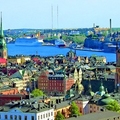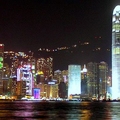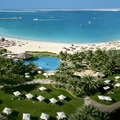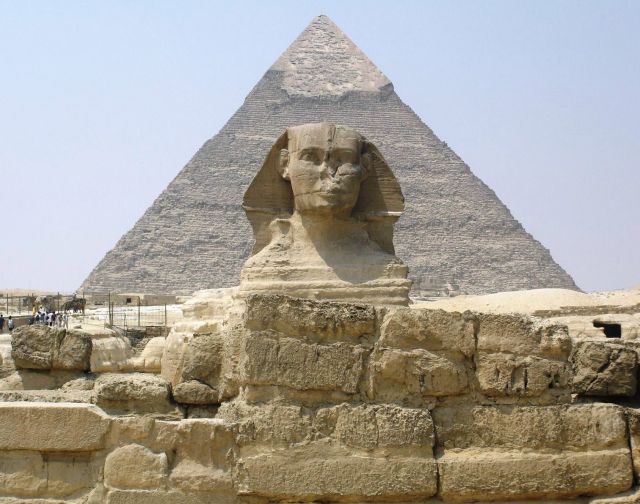Destinations / The best capital cities in the world / Cairo
Cairo
About Cairo
Cairo is the biggest city in Africa called also the "thousand minarets" city, the "East Gate". It contains the ancient Heliopolis, Babylon of Egypt, and medieval Fostat, towns that belong to different eras. Cairo represents minarets and bell towers, high-rise buildings and villas, palm trees and neon lights, bustling bazaars and many shops with souvenirs for tourists. Cultural performances of the six thousand years of the Egyptian civilization are concentrated here. The old and the modern history of Egypt are separated by the Nile and surrounded by the sands of Cairo.
Giza
Giza, the third most populated Egypt city, where the famous Pyramids and Great Sphinx survived, merges with Cairo. The idea of immortality, the strangeness around the fragile and impermanent, the power and the authority of the pharaohs embodies the appearance of these splendid monuments. The favorable strategic position between the Nile valley and the delta contributed to the emergence of settlements on the territory of modern Cairo in ancient times. The city bore two names: El-Qahira ("Winner") and Umm al-Dundzha ("Mother of the World") at different periods of its history. There was a legend, known by the ancient Egyptians, telling about a war between the brothers, the gods Horus and Seth on Cairo territory.
The Legend of the city
The city history begins in the VII century. At that time, the name of the commander ‘Amr ibn al-‘A was mentioned for the first time in written sources. Born, like the Prophet Muhammad in Mecca, ‘Amr ibn al-‘As was a sincere gainsayer of the new religion at the beginning. But he became an active spreader of Islam in Egypt in the future. The commander settled his legion which became the center of old Cairo on the area of the Babylon Roman camp. But only the Fatimids based the new town Al-Qahirah, the present Cairo, at the north of Great Fustat in 969.
Cairo's own story begins with 969, when the Libyans (Berbers) conquered and destroyed the al-Fustat city and Cairo was founded on its place. Mars which the Arab astrologers called Al-Qahirah (Victory) shined bright in the sky at that time according to the legend. Therefore the city was known as Al-Qahirah. Cairo became one of the largest cities in the East by the end of the X th century. The Persian traveler Nasiri Khufu, who visited Egypt in 1046-1049, left a detailed description of that time. According to him, it was a big city with about 20 thousand homes. Many houses had 5-6 floors and were separated from one another by squares and fruit orchards. Carved doors of the houses were made of mahogany. According to the traveler, there were about 20 thousand of shops with an abundance of goods, fruit and vegetable markets being amazing in Cairo. Cairo became the largest commercial and cultural center of the east in 1200-1300. Its population exceeded one million by 1300. The territory was ruled by the Mamluks from 1250 to 1517. They decorated the city with countless mosques, mausoleums, Koran schools, and, unfortunately, almost destroyed palaces. Cairo got more and more provincials by the end of the Middle Ages. The reformist Muhammad Ali awakens the city from centuries of sleep just in 1805. Winning the famous Battle at the Egyptian pyramids, the French had been taken to Cairo on July 21. But after the British Admiral Nelson defeated the French squadron, the French left Egypt, plundered the country and the capital. The secret organization "Free Officers" made a coup overthrew King Farouk and formed a new government on July 23, 1952. So Egypt became a republic with its capital Cairo, the seat of the president and of the parliament.
A tour in Cairo
Citadel Salladina reverberated for many years the invasion of the triumphers, being one of the oldest castles in the world today. A splendid panorama of the city opens from this monument. You can see the amazing minarets of the Mohammed Ali Mosque and the Sultan Kalauna Mosque. You will enjoy the world's biggest collection of Egyptian art in the Egyptian Museum. You can visit the papyrus and jewelry factories, the Perfume Museum with its amazing odour. You will always remember this tour. You will be fascinated by the great aqueduct from the Nile to the Citadel tower, the oldest Arabic University and the Beit al-Sennar. You can also enjoy the visit to the biggest bazaar in the Middle East - Khan el-Khalili , that almost didn’t change since XIV century. You can buy Egyptian cotton and other fabrics in the largest open-air markets like Vekelat el-Balah, and musical instruments on the Mohammed Ali street. Spices, perfumes, gold, silver, carpets, copper and bronze, leather, glass, ceramics, and other things available on the East can be bought in Cairo. You will long remember and tell your friends about your trip to the camel market that you visited even if you didn’t need a camel. If you want something exotic, you can have a trip by the felucca on the Nile or a trip on the horseback from the Giza Pyramids to Saqqara Pyramids. If you want to relax then visit the "Mena House" hotel golf club and enjoy the famous pyramids or visit the Gezira club and watch the races there, visit the zoo or botanical garden. The best time for shopping or exploring the eastern cuisine is the night. The life of the big city enhances by this period of the day. You can dine in a restaurant on the water or at a roadside café. You can enjoy the local traditional dancers in the hotels in the evenings. There are art galleries, restaurants, a modern art museum and halls for concerts in a splendid complex of the Opera House. You will not forget the Arabic music under the sun. It will be a pleasure for you to have a tour in Cairo.
Climate
The subtropical rains are very rare, but if they fall, then very rapidly, often causing floods. Spring begins in March and ends in mid-May. The air temperature in Cairo in the spring is +28 .. +30 ° C during the day, and drops to +14 .. +17 ° C at night. Summer begins in May and ends late in September. At this time, the temperature in Cairo during the day is +30 .. +35 ° C, and at night drops to +18 .. +22 ° C. Autumn begins in Cairo in October and ends late in November. At this time, the temperature during the daytime is +30 .. +26 ° C, and at night drops to +14 .. +19 ° C. Winter lasts from December to February and is the coldest (according to the Egyptian standards) season, the temperature during the day is +19 .. +21 ° C, and at night drops to +14 .. +8 ° C. Hot and dry or cold as ice, wind - khamsin blows from the desert from March to May. It pervades all areas of the city and leaves a lot of sand at every door. Usually it lasts about two weeks.
Main Attractions
Museums
Egyptian Antiquities Museum is the world's main repository of Egyptian antiquities, a collection which has 120 thousands of exhibits, among which 27 mummies of Egyptian pharaohs, as well as the collection of papyri, coins, sculpture and crafts products. A separate exhibition is dedicated to the finds from the tomb of King Tutankhamun, discovered in the Valley of the Kings by the English archaeologist Howard Carter in 1922.
The Coptic Museum is founded in 1910 based on the collection of art and culture, owned by Marcus Simayke. The exhibits can be found in 29 rooms, and can trace the history of Christianity from the birth till the present time. The museum has the richest collection of Coptic art and crafts products in the world, about 15 thousand items. Coptic museum also includes a repository of famous papyri from Nag Hammadi - the early Christian Gnostic texts discovered in 1945 in Upper Egypt.
The Museum of Islamic Arts is a unique treasure of Islamic culture, which has more than 102 thousand pieces of art in its collections. Manuscripts, miniatures, carpets, fabrics, weapons and other exhibits stored here help you to get a fairly complete picture of the history of the Muslim world and his art.
The Agricultural Museum has materials about the agricultural development from pre-dynastic Egyptians until the end of the Pharaonic era, methods of farming and trading.
The Museum of the Entomological Society represents the spirit of the Victorian era: a collection of insects pinned to the pins, stuffed animals and birds belong to the period of British occupation of Egypt in the early XX century.
The National War Museum contains a rich collection of everything that is connected with the army and military history of Egypt. There is an interesting collection of antique and rare weapons, ranging from the Pharaonic era until the XX century.
The National Postal Museum is located in a separate wing of the main post office, and serves as a reminder that Egypt was one of the first States issued a postage stamp.
Gayer-Anderson Museum is named after the British military doctor, Major Robert Anderson Gayer (1881-1945), who lived in Cairo between 1935 and 1942, by special permission of the Egyptian government. The house is one of the best preserved examples of private buildings of the XVII century in Cairo. The exhibition includes a big amount of pictures representing people’s life in the Ottoman era, as well as an extensive collection of furniture, carpets and curiosities belonging to Gayer Anderson.
The Egyptian Geological Museum, with an extensive collection of minerals and fossils, also illustrates the relationship of geology and history of Egypt for thousands of years, starting from pre-dynastic era, the initial stages of mining and metallurgy.
Architectural Monuments
Giza Pyramids are on the Giza plateau on the outskirts of Cairo. The Pyramid of Cheops is the only existing monument of the 7 Wonders of the World.
The Citadel lies at the end of the XII century at the spur of the mountain Mukattam during the period of Salah Ad-Din Al-Ayyubi (Saladin). The Citadel was the seat of the Egypt rulers during the VII centuries.
Coptic Cairo Quarters are located on the territory of the ancient al-Fustat. Two towers and the area of defensive walls of the Babylon Roman fortress are the most ancient monuments of this part of the town.
The Muslim neighborhoods of Cairo represent the chaotic weave of narrow streets and numerous alleys. The big part of the nearly 500 mosques is located here.
Mosque of Muhammad Ali is one of the most striking sights of the Citadel. The mosque stands on the highest point in the Citadel. The architecture of the mosque is a mixture of different styles and is in sharp contrast with the strict structures of Mamlouk era. The mosque was built by the architect Youssef Boshna who was a Turk of Greek origin.
Mosque of Suleiman Pasha is located on the far side of the Citadel. It was built in 1528 shortly after the Ottoman conquest of Egypt, in traditional Turkish style, with a covered prayer hall and a pointed minaret.
Mosque of Sultan Hassan is located on the left of the Citadel. Its stone walls stretch for 150 meters,it is of 40 meters in height and 69 meters in height with the dome. The hospital and the mausoleum of Sultan were located in the mosque.
The Rifai Mosque stands near the Citadel but it is 500 years younger. The architect wanted to create an ensemble of two mosques and chose the style of the XIV century. The death of the architect interrupted for a long time the building and the mosque was finished just at the beginning of XX century.
Mosque of ‘Amr ibn al-‘As was originally built in 642 as the religious center of the first Arab capital of Egypt - Fustat (Old Cairo). It was the first mosque, not only in Egypt but throughout Africa.
Mosque of Al-Azhar is considered the first architectural work of Fatimids. It is located on the southeast side of Cairo, near the big castle, which existed at that time and was situated between the district Dailami and the district Turk from the south.
Mosque of Ibn Tulun is perhaps the oldest mosque in the town, that preserved its original look. The mosque was built by Ahmad Ibn Tulun, the governor of Egypt at the time of the Abbasids in 868-884 years.
Mosque Al-Hakim was built in 990-1013. The mosque was attached to the northern wall of the city. Its open courtyard was supposed to contain a large population of the city during Friday prayers.
The “Blue Mosque" was built in 1347 by the Mamlouks on the Bab al-Wazir street and became the burial place of the Shamas al-Din, as well as one of the Sultan Muhammad sons. The mosque got its name from the blue tiles with floral designs that adorn skillfully the walls.
Cairo is the biggest city, where life abounds and at the same time flows slowly, where the majestic Nile rolls its eternal water.
Others The best capital cities in the world .
Others from The best capital cities in the world
Who doesn't wish for an exciting vacation or who isn't attracted by fascinating experiences? This poll provides comprehensive information about the best, most important capital cities in the world that we generally recommend as wonderful places to explore.
Let them be your starting point and consider these places might occur to you and suit your goals.
These are the most liveable,friendly and multicultural cities on Earth, with the most exciting cultures,with the most beautiful beaches, with the most lively nightlife and the most beautiful scenery.
Explore the cities and find out the best kept secret of each of them.
I'm sure you'll experience senses to the fullest intensity.



















